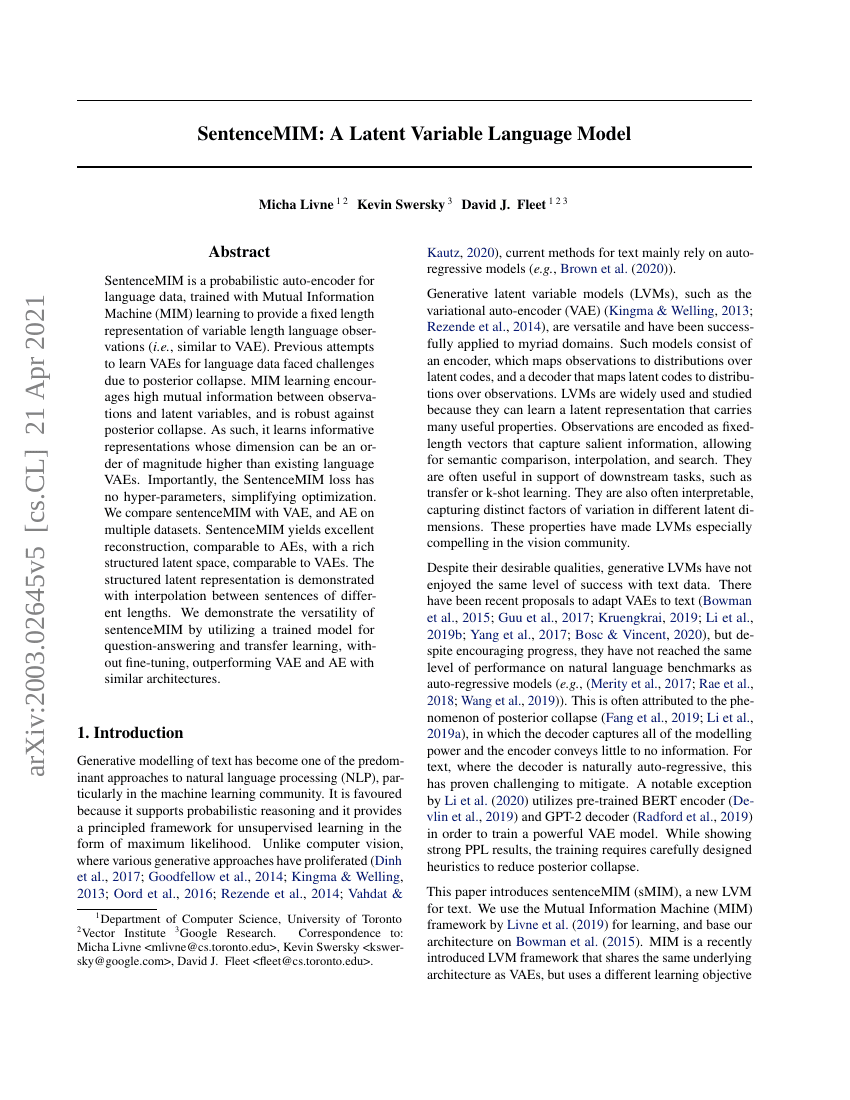Command Palette
Search for a command to run...
Micha Livne Kevin Swersky David J. Fleet

Abstract
SentenceMIM is a probabilistic auto-encoder for language data, trained with Mutual Information Machine (MIM) learning to provide a fixed length representation of variable length language observations (i.e., similar to VAE). Previous attempts to learn VAEs for language data faced challenges due to posterior collapse. MIM learning encourages high mutual information between observations and latent variables, and is robust against posterior collapse. As such, it learns informative representations whose dimension can be an order of magnitude higher than existing language VAEs. Importantly, the SentenceMIM loss has no hyper-parameters, simplifying optimization. We compare sentenceMIM with VAE, and AE on multiple datasets. SentenceMIM yields excellent reconstruction, comparable to AEs, with a rich structured latent space, comparable to VAEs. The structured latent representation is demonstrated with interpolation between sentences of different lengths. We demonstrate the versatility of sentenceMIM by utilizing a trained model for question-answering and transfer learning, without fine-tuning, outperforming VAE and AE with similar architectures.
Code Repositories
Benchmarks
| Benchmark | Methodology | Metrics |
|---|---|---|
| question-answering-on-yahoocqa | sMIM (1024) | MRR: 0.818 P@1: 0.683 |
| question-answering-on-yahoocqa | sMIM (1024) + | MRR: 0.863 P@1: 0.757 |
Build AI with AI
From idea to launch — accelerate your AI development with free AI co-coding, out-of-the-box environment and best price of GPUs.